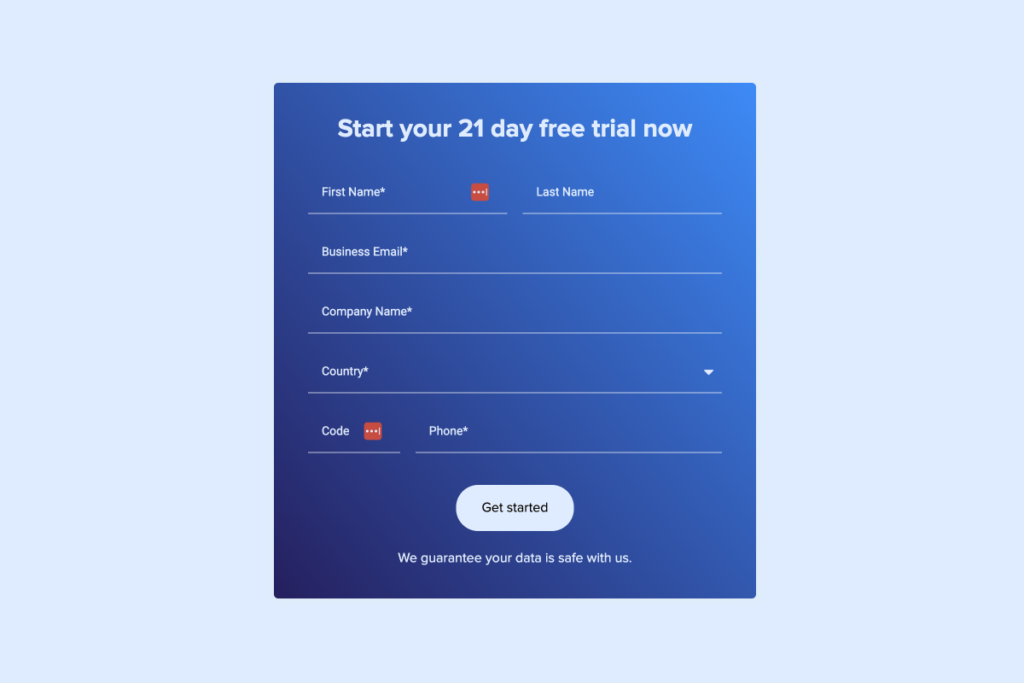In a project aimed at improving conversion rates, a common hypothesis in Conversion Rate Optimisation (CRO) projects was put to the test – fewer fields in a form lead to higher conversion rates. This was based on the perception that potential customers would prefer a less burdensome process to complete the form. However, the findings from this study took a surprising turn.
The existing form had 13 fields, including personal details, location details and professional details. The initial conversion rate was used as the benchmark for this project. For the variation, I reduced the number of fields down to 4 – Name, Email, International code and Phone number to simplify the process for the potential customers.
A/B Testing
A split url test was setup to ascertain the conversion rate for forms with fewer fields versus the original form. The tests were performed under similar conditions and targeted the same customer segment to ensure consistency and reliability of the results.
Contrary to the initial hypothesis, the conversion rates did not improve with fewer fields. Instead, the conversion rates of the shorter forms were noticeably lower than the original form. This intriguing trend persisted even when the team implemented different versions of the shorter form.
Conclusion
The team deduced that having a fair number of fields gave the form a sense of importance. Customers perceived the form as a significant part of the process, thus taking it more seriously. This ‘form significance effect’ led to debunking the popular CRO hypothesis that fewer fields always lead to higher conversions. This project revealed the potential pitfalls of blindly following optimisation heuristics.
Efforts were then made to bring more traffic to this page via SEO, conversion tracking on the other pages and more internal links pointing to the form page.














